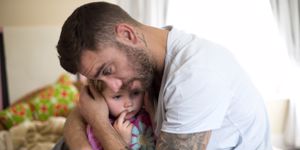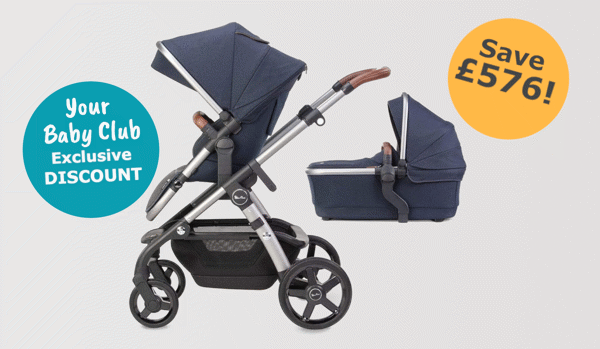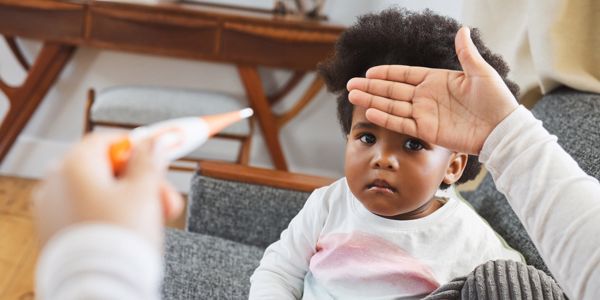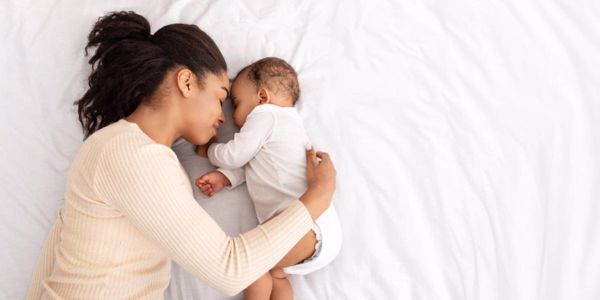Most accidents involving children under the age of five happen within the home. The majority of these accidents are avoidable, and by recognising potential risks we can help to protect our children and keep them safe around the home.
Here are some of the most common hazards around the home, how they occur, and what you should do if your child has an accident to make sure they get the treatment they need.
Accidental Poisoning
There are all sorts of items lurking around our homes that could potentially be harmful to children if they are swallowed.
All babies go through a phase of putting everything in their mouths! This is a sensory thing and completely normal, and it’s our job as parents to make sure anything that could be harmful is kept out of their way. This includes any small objects that could be a choking hazard based on size alone.
Some common causes of accidental poisoning around the house include:
-
Medication
Household medicines are the number one reason children are poisoned. Some everyday tablets look like sweets, and if our children see us taking them they may try to mimic us. It’s important to keep any handbags, which may contain painkillers and other dangerous items, well out of reach and move any tablets out of bedside cabinets.
-
Cleaning products
It’s really important to ensure cleaning products are locked away or kept out of reach. Did you know that childproof caps aren’t actually completely childproof? Once a child is 3 or 4 years old they can get into them, sometimes in seconds, so anything harmful still needs to be kept well out of reach.
One top tip is to look out for products that include Bitrex, which is a bittering agent that encourages children to spit out the product rather than swallow it.
-
Button batteries
Button batteries, particularly the larger lithium coin cell batteries, can be very harmful to children. Not only are they a choking hazard, but when these batteries come into contact with saliva, they produce a substance called caustic soda, which is the same substance that is used to unblock drains.
If a child swallows one of these batteries, they can cause catastrophic internal damage in a matter of hours, so it’s vital to act fast and take a child straight to A&E if you suspect they have swallowed one.
-
Plants
Some plants are toxic and can be harmful for little ones if ingested. It’s a good idea to know what plants you have around your house and remove any that could be harmful to your child.
Dealing with accidental poisoning
If a child does swallow something they shouldn’t, you should call 111 for medical advice if they seem well in themselves. If they are unwell, call 999 or take them straight to A&E, and don’t give them anything to eat or drink if they’ve ingested something poisonous.
While it might seem difficult, you should always let the doctors remove whatever they have ingested in hospital. It is also important to monitor the child’s breathing continuously, and take the packaging of what’s been ingested. Take it to the hospital with you if you have it to hand, as this will be helpful for the doctors.
Burns
A small child’s skin burns really easily as it’s so thin and delicate, and they might not know to pull away quickly when something is burning them.
Some common causes of burns for young children around the home include:
-
Hot drinks
A hot cup of tea can still burn a child 15 minutes after it’s been made. Keep them well out of reach and don’t hold hot drinks while you’re holding a baby or child.
-
Hair straighteners
Hair straighteners can get as hot as an iron and can still burn 10 minutes after they have been switched off. Keep them in a heatproof pouch well out of reach.
-
Bath water
Ensure bath water is checked before putting a child in by using your elbow.
-
Kettles and pans
Push hot kettles and pans to the back of the work surface or stove so they are well out of reach.
What to do if your child does get burned
If your little one does accidentally get burned, the steps you follow in the immediate aftermath could make all the difference to the extent of the damage and how well they.
Immediately after the accident, follow these steps:
- Remove clothing or jewellery providing it isn’t stuck to the skin
- Hold the affected area under cool (not too cold) running water for a full 20 minutes keeping the rest of the body warm
- Cover the affected area in cling film – this will help with the pain and will also keep the area clean
- Seek medical advice
Head injuries
It’s pretty common for a young child to bump their head from time to time. Once they begin walking and grow to a height that is exactly that of all the corners of the tables in your house, the occasional bang to the head is to be expected, as difficult as it can be to deal with.
With head injuries, it’s important that we monitor the child for at least 24 hours afterwards. They might have a bump, bruise or an indent to the head, but a cold compress (or bag of peas wrapped in a tea towel) on the affected area should help reduce any swelling.
It’s completely normal for a child to get quite upset when they bang their head, and it’s also normal for them to recover seemingly quickly and carry on behaving normally not too long after the accident.
When to seek medical care after your child’s head injury
If your child’s condition doesn’t improve, they become unwell, or their behaviour changes in the hours or days following a bump to the head, you should always take them to be seen by a medical professional.
If they display any of the following symptoms, take them straight to A&E:
- Loss of consciousness
- Drowsiness when they would normally be awake
- Confusion
- Multiple episodes of vomiting
- Problems understanding or speaking
- Problems with coordination
- Weakness in one or both arms or legs
- A seizure
- Swelling/bruising around the eyes or ears
- Worsening headache that won’t go away, despite taking painkillers
- Clear fluid or blood coming out of your child’s ears or nose
- New deafness in one or both ears
These are just some of the common accidents that occur involving children around the house. To find out more about how to deal with a range of emergency scenarios involving a baby or child including seizures, choking, anaphylaxis, CPR, recovery positions and lots more why not book a Daisy First Aid class.
This award-winning 2-hour class is friendly, relaxed, fun and fear-free, and lets you learn at home with friends and family. To find your local Daisy First Aid trainer visit our website and pop in your postcode.
Daisy First Aid are speakers at The Baby Show.







